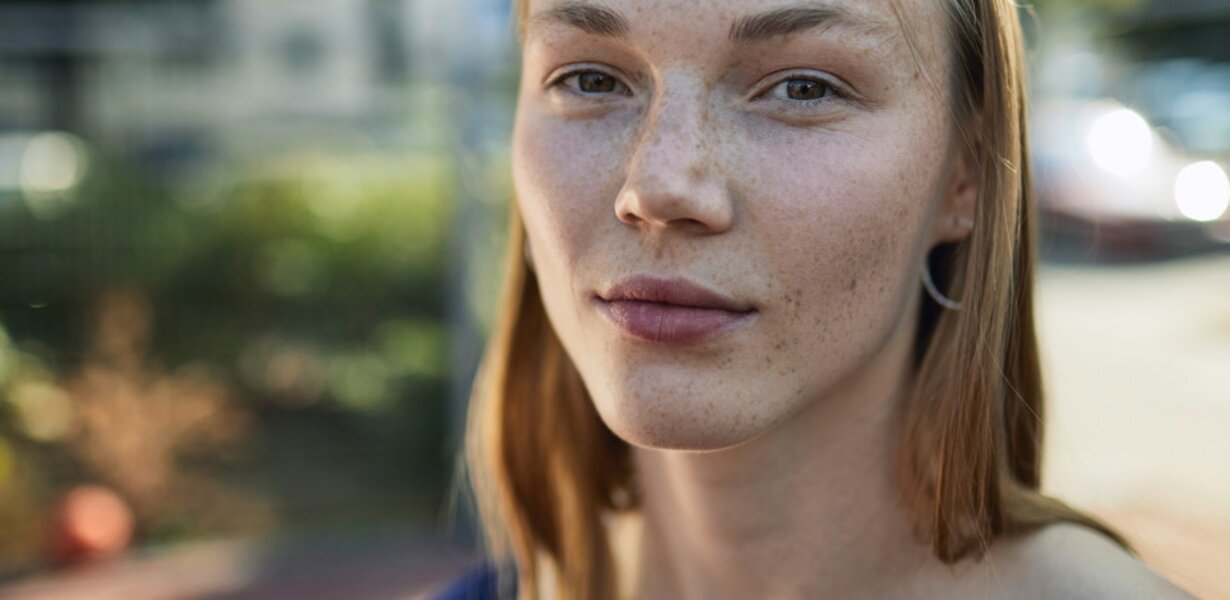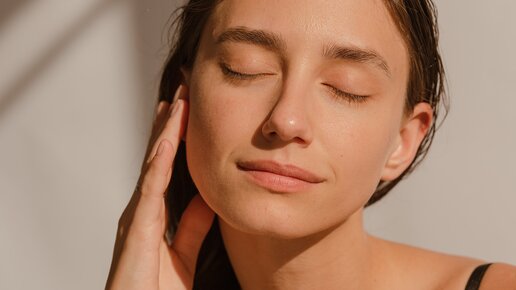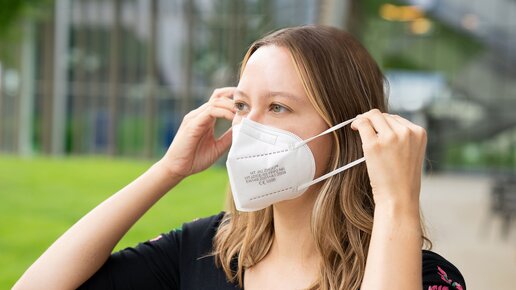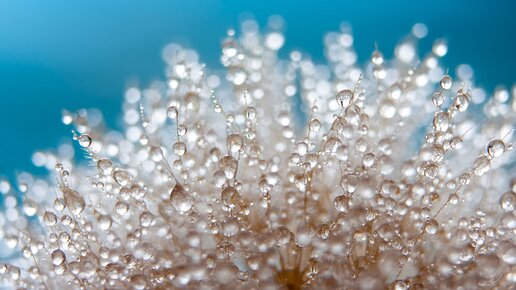It accompanies you to the school ball, smiles happily in the class photo, packs its bags too for holiday camp: acne, which makes its presence felt for most teenagers during puberty. However, the mere fact that it is so widespread doesn’t mean that this group phenomenon is a must-have. But at least you’re not alone with your pimples, pustules etc. It’s a different kettle of fish once you have actually outgrown the age for pimples, but your acne still flourishes. An individual case? No! Adult acne affects more people than you think. But where does acne come from and what can you do about it?
What is acne?
Pimples have bad habits: they usually appear when they are least welcome. If several pimples and blackheads (congested skin pores) keep recurring on the skin, this is known as the chronic inflammatory skin disease acne, which is one of the most common skin diseases worldwide. Around 60-80% of all adolescents suffer from acne, especially in the T-zone of the face (forehead, nose, chin). Less frequently, the skin impurities also appear on the back and/or neckline.
History fact:
Acne was already well known in ancient Rome. Even in those days they tried to get rid of skin blemishes and pimples with all sorts of means. The Roman officer and scholar Plinius the Elder (23-29 AD) recommended a mixture of butter and lead. No one would do that today.
Why do you get acne? The causes:
Shiny hair, smooth skin – what would we be without the nourishing sebum oil that our sebaceous glands secrete daily for our skin and hair? In normal quantities, a source of beauty, however, too much and it becomes quite the opposite. Overproduction – especially in combination with excessive callus producing cells – thus clogs the excretory ducts of the sebaceous glands with a plug. Certain skin bacteria (especially Propionibacterium acnes) find optimal growth conditions in the sebaceous gland secretions. The explosive bacterial growth and its waste products eventually lead to inflammation, which emerges as pimples, pustules and nodules.
Common acne: A question of hormones
The most common form of acne is acne vulgaris, also called common acne. This usually occurs in the course of hormonal changes. In this way, some parents observe how the sheer, flawless appearance of their offspring develops blackheads and pimples “almost overnight”. The "bad boys" are male sex hormones (androgens) as well as the growth factor (GH), which ensure that the sebaceous glands enlarge and the production of sebum is stimulated. Androgens are not – as some might assume – inherent to men, but to a lesser extent also to women, especially during puberty. In addition to the circulating androgens themselves, sebaceous glands that are hypersensitive to these hormones can also trigger acne.
Not just a manifestation of puberty
Pimples are not simply an affliction of youth, but also become noticeable in the event of later hormone changes or fluctuations. This includes monthly periods, discontinuation of the contraceptive pill, pregnancy, breastfeeding and menopause. In addition, the stress hormones cortisol and adrenaline as well as insulin, which lowers the blood sugar, can also lead to hyperactivity of the sebaceous glands and acne. Studies show that the mind (e.g. stress, strain) and a hereditary predisposition promote the occurrence of acne. In addition, certain care products or medications stimulate sebum production and thus contribute to blocked pores.
Medications that promote acne:
- Corticosteroids (cortisone)
- Adrenocorticotropic hormone
- Antibiotics
- Anabolic steroids
- Psychotropic drugs
- Sleeping pills and sedatives containing bromine
Characteristics of acne vulgaris
Depending on the severity, acne vulgaris can be divided into three sub-forms:
Light acne (comedonal acne)
If blackheads and a few pimples only appear on the face, this is called mild acne. In this mild form, only mild inflammation occurs, which is why no scarring is to be feared.
Moderate acne (papulopustular acne):
In the most common form of acne vulgaris, the problem skin is marked by clear pus pimples and nodules, which are not only visible on the face, but also on the back. Those who are able to leave these blemishes alone, usually get rid of them without scarring, even with moderate acne.
Severe acne (acne conglobata):
The most severe form of acne is characterised by a lot of pus pimples and painful inflammation. The pimples are not only limited to the face, but also to the back and the décolleté. Those affected should not try to treat their skin impurities themselves, but seek medical assistance. Otherwise, the deep inflammation, which can also combine under the skin, can leave significant acne scars.
What types of acne are there in addition?
Late acne/adult acne (post-adolescent acne)
Pimples, blackheads, skin blemishes – some adults feel as though they have reverted to puberty in their 20s and 30s. Unlike pubertal acne, the blemishes in late acne are mainly visible in the area of the cheeks, chin, neck and lower jaw edge (U zone). The causes of adult acne are diverse and their interaction has not yet been conclusively researched. Like standard acne, adult acne is also based on hormonal changes or physical imbalance (e.g. menstrual cycle, pregnancy, discontinuation of the pill, menopause) which promotes sebaceous gland activity and excessive keratinisation. In addition, stress, microbial colonisation in the intestine, genetic predisposition, lifestyle, cosmetics and cigarette consumption can also play a role.
Maskne:
If maskne was previously an occupational disease, mask-related skin impurities are now high on the list. While protective masks prevent coronaviruses and other pathogens from entering the body, the frequent wearing of masks can lead to an outbreak of unattractive acne. This can be attributed to micro-cracks in the skin barrier, which are caused by the mechanical friction of the protective mask. Germs and dirt can infiltrate through these injuries and lead to inflammation and skin impurities. In particular, existing acne can react to the mask by producing further pimples. You can find out more about masks and our skin here.
Acne mallorca (acne aestivalis)
Unlike what the name suggests, you don’t have to spend time in Mallorca to have an eruption of acne mallorca. This special form of sun allergy usually occurs in spring or early summer when the skin has not been exposed to sunlight for a long period of time, and it also tends to occur in people who suffer from acne, skin impurities or greasy skin. This is caused by UVA rays acting on the fat components of the skin or cosmetics (e.g. suntan lotion) and leading to inflammatory reactions in the hair follicles. The typical papules, pustules and redness are often associated with severe itching.
Neonatal acne
Neonatal acne is a harmless skin rash that occurs in the first weeks after birth and usually disappears by itself. This is due to the exposure of the baby to the mother’s hormones during pregnancy which abruptly stops after birth. As a result, the sensitive baby skin reacts with pimples.
Acne inversa
Acne inversa is a chronic skin disease which is difficult to treat and which usually occurs in early adulthood and progresses in episodes. Painful blocking of the hair root canal occurs, in particular in the area of the underarms and genitals. The extremely red, hard skin nodules can also develop into encapsulated abscesses, which can merge with each other at depth and break open on the outside. The recurring painful symptoms are not only physically stressful for many patients, but also emotionally stressful.
Fungal acne
Fungal acne is not caused by bacteria, but by fungi. The phenomenon is triggered by the so-called Malassezia yeast fungus, which is a natural part of our skin flora. Researchers suspect that the fungus can over-infiltrate the skin in fungal acne and thus penetrate deeper layers of the skin. The fungus can then lead to unpleasant skin reactions in these "filtrates". Itchy papules appear especially on the forehead, which are neither filled nor can they be expressed. The impurities can also spread to the cheeks and sometimes reach the chest and back. Dermatological advice should be sought to detect a possible Malassezia infection.
Fighting acne vulgaris: What helps to combat it?
There is no generally valid answer to the often burning question “What helps to combat acne?”. Depending on the cause, shape and skin type, there are different measures that can be taken to stem the development of the acne that is developing before your very eyes. For less serious forms, dietary changes, the right skin care and special cosmetic treatments (e.g. Acne Toilette) can be helpful. In the case of severe forms, you should definitely seek medical support from a dermatologist. Depending on the cause and form, salicylic acid or fruit acid peels and, under certain circumstances, antibiotics or retinoids may be used as therapeutic countermeasures.
Retinoids
In the case of severe acne, dermatologists can recommend a retinoid (derivative of vitamin A) for external acne treatment. Retinoids promote the scaling of the skin and allow the sebum to drain off again. Some of these preparations also fight inflammation at the same time. In severe cases, isotretinoin can also be prescribed by a doctor. This orally taken medication reduces the formation of sebum, has an anti-inflammatory effect and reduces blackheads. But be careful: During pregnancy and breastfeeding, retinoids and isotretinoin must not be used under any circumstances.
Diet for acne
“You are what you eat.” Many of us know this saying only too well. And where does this mantra express itself more than in our skin? More and more studies confirm what those affected have long suspected: Sweets and other foods that have a strong effect on our blood sugar encourage an outbreak of pimples. These highly glycaemic foods lead to increased insulin secretions; these in turn indirectly stimulate androgen formation. The sex hormones are then ultimately the ones that promote the production of sebum and keratinisation cells and encourage pimples.
Studies show that dairy products also have a certain acne potential by increasing the release of the growth factor IGF-1, which stimulates the callus-forming cell and stimulates the sebaceous glands. In contrast, the consumption of Omega-3 fatty acids in the form of fish and valuable vegetable oils has a beneficial effect on acne.
Home remedies for acne
Cucumber slices for tired eyes, apple vinegar for dull hair, olive oil for brittle nails – grandma's DIY beauty list is long and her box of tricks also contains remedies for acne. Advice:
Tea tree oil: In the case of skin impurities, you don't always have to reach for a chemical solution straight away. Tea tree oil has a natural antibacterial effect and is dabbed directly onto the affected areas of the skin for the treatment of pimples.
Chamomile steam bath: A facial vapour bath is not only good for colds. This ancient method is also recommended for acne. Because a chamomile steam bath not only opens the pores, it also has an anti-inflammatory effect.
Cleansing clay: This basic mineral mixture is a secret formula for acne. For cosmetic use, the cleansing clay is stirred with water and applied to the skin. Once the clay has completely dried, the mask can be washed off again. The application removes fat, sebum and excess skin flakes from the skin.
Zinc: Zinc can also be actively used to fight acne. The trace element contributes to the regulation of the sebaceous flow, inhibits bacterial growth and accelerates the healing of acne lesions (skin damage caused by acne). Zinc is also useful on the outside. Ointments containing zinc oxide dry out pimples and fight bacteria.
In certain cases, home remedies can be used to achieve success, but even home remedies have their limits. If there’s no improvement in your problem skin, or if it gets worse, it is definitely advisable to seek advice from the doctor.
Support with micronutrients
In addition to the zinc already mentioned, other micronutrients can also be helpful for acne. Studies have shown that increasing numbers of harmful radicals are formed in the course of acne vulgaris, which worsen the inflammation, while the number of the body's own radical scavengers (antioxidants) decreases more and more. People who take antioxidants in a targeted fashion (e.g. vitamin C, beta-carotene or grape seed extract), can help their body fight tissue damage. In order to reduce the inflammatory disease processes of acne, it is also possible to use incense, which has a natural anti-inflammatory effect.
Support of the intestinal flora with pro- or prebiotic preparations
Recent research has revealed another promising approach: There is a direct connection between the intestinal flora and acne, which manifests as increased intestinal permeability. Supporting the intestinal flora with pro- or prebiotic preparations therefore appears to be another important aspect in the treatment of acne. Find out more about the intestine-skin correlation here.
How long does it take for acne to disappear?
Unfortunately, even the most effective medications need time to significantly improve or alleviate acne. Dermatologists generally expect a treatment period of at least twelve weeks. Since the causes such as hormone fluctuations and predisposition persist after acne therapy, the skin must continue to be cared for or treated according to its needs.
Due to the individual course of the disease, even dermatologists with years of experience have a difficult time making an exact prognosis. In most acne vulgaris patients, the acne heals at around the 20th year of age. However, there are also more persistent cases with longer courses or patients who develop acne only in adulthood. In addition, acne can flare up again in certain situations, such as stress or menopause.
Even if symptoms such as blackheads and pimples subside over the years, the physical prerequisites for another outbreak remain. Therefore, the acne problem can pop up again under certain circumstances (e.g. psychological stress, incorrect diet, cigarette consumption, discontinuation of the pill).
Clarifying final words
Unfortunately, you can’t choose whether to develop acne or not. However, if you are hit by a bout of acne, you are not powerless in the face of it. Adequate skin care, the right diet, well-selected nutrients/gut helpers as well as one or other of the household remedies are the key to continuously improving your skin complexion. Consult your dermatologist for severe forms.








